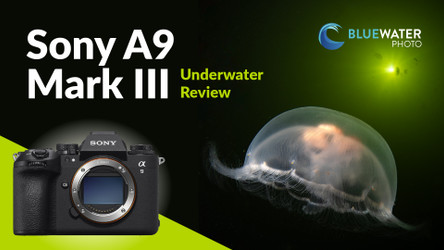Sony A9 III Underwater Review
Posted by Nirupam Nigam on April 21st, 2024

Sony has once again revolutionized underwater photography. With the Sony A9 III the coveted, long awaited, and seemingly unattainable "global shutter" is here. For years, the idea that every pixel on a sensor could be recorded and sent to the processor instantaneously felt more like a thought-experiment than a possibility. What would such a shutter mechanism look like for underwater photography? Well now we know... and it's game-changing.
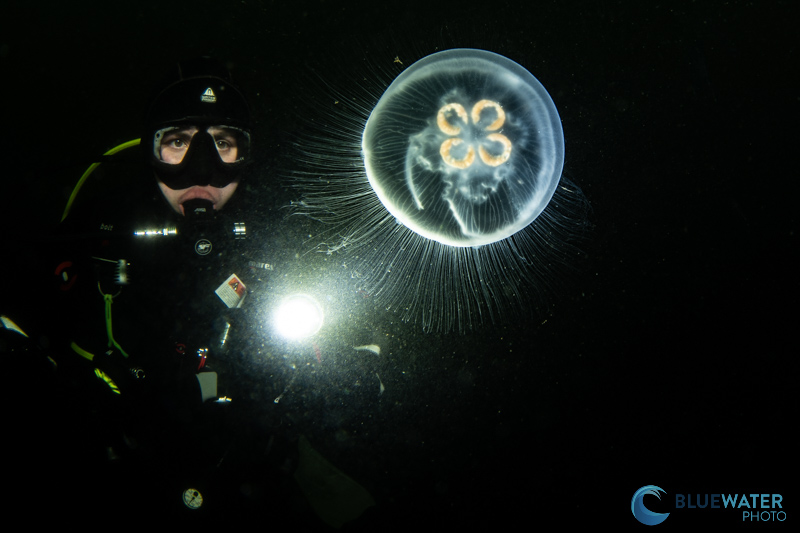
The Sony A9III allows you to capture black backgrounds during the day with a high flash sync speed - like this photo of a diver with a jellyfish at noon. f/16, 1/250, ISO 250
The World's First Global Shutter Camera
The Sony a9 III boasts a revolutionary feature known as a global shutter, which allows the image sensor to capture every pixel in an entire image simultaneously. Unlike a mechanical shutter, there are no moving parts involved in the process; it's entirely electronic. Sony achieved this through their innovative 'stacked sensor' design, where each layer of the sensor processes data simultaneously, enabling much faster readout speeds.
With a global shutter, the Sony a9 III can achieve a flash sync speed of up to 1/80,000 of a second, a significant leap from the typical 1/250 second limit imposed by most cameras when using strobes. This has several benefits for underwater photographers:
- You can capture underwater photos in much brighter lighting conditions (e.g., shallow, tropical water in the midday sun) and properly expose sunlight and sunballs - while also illuminating your subject with your strobes. This creates a more dramatic gradation from your highlights to your shadows and can be used to isolate your subject, which would be illuminated by artificial strobe light.
- You can capture photos with black backgrounds in bright lighting conditions by increasing your shutter speed. This will not affect the light coming from your strobe (with a few exceptions at very high shutter speeds).
- A higher shutter speed allows you to "freeze" a moving subject in your image for better details and less motion blur.
- If you are not shooting with strobes (which are limited by recycle times), an ultrafast readout speed also allows the camera to capture photos extremely quickly - up to 120 frames per second (RAW) burst shooting.
We had the exciting opportunity to be the first to dive with the new Sony a9 III on an experimental blackwater dive in the Pacific Northwest, as well as at some of our local shore diving sites. Conditions were perfect for testing a global shutter - the bright mid-day sun allowed us to push our shutter speeds higher than traditional flash sync speeds and really play around with isolating ambient light. The blackwater dive benefited from a fast shutter speed as small, fast-moving critters encircled us. Overall, we are extremely pleased with the results and believe that the Sony a9 III is just our first taste at further innovation around the corner that will redefine underwater photography. So enjoy these images and videos that we captured and read on for our full review of the Sony a9 III for underwater photography...
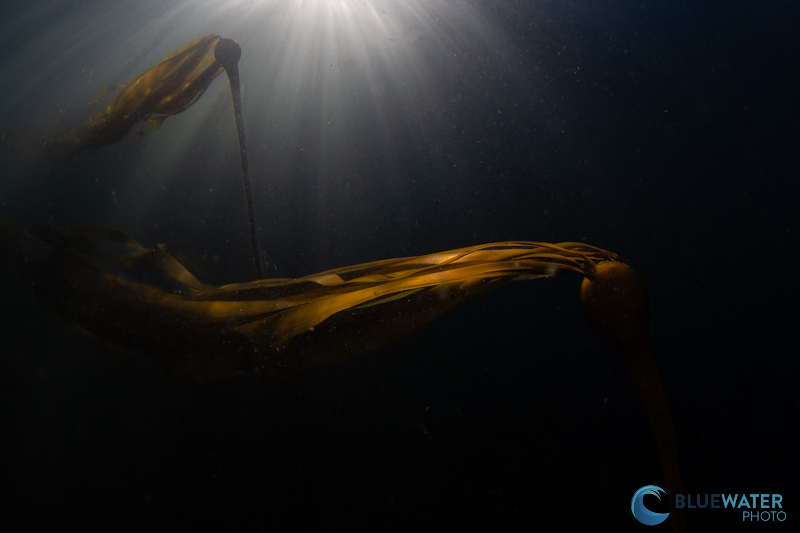
An almost ethereal mid-day kelp forest capture with the Sony a9 III. 1/400, f/13, ISO 250
Support our content and purchase your Sony A9 III at Bluewater Photo.
US MSRP: $5999.99
Check out our guide to the best Sony A9 III underwater housings

Top Sony A9 III Specifications
- 24.6 megapixel stacked full-frame CMOS sensor
- First full-frame camera with a global shutter
- 1/80000 max shutter speed and flash sync speed
- 120 autofocus calculations per second
- 120 fps 14-bit RAW burst shooting
- Native ISO of 250
- 4K/120p recording with full width of the sensor
- 4K/60p recording oversampled from 6K for more detail
- -5 EV lowlight autofocus sensitivity
- Electronic shutter only
- 8 stops of 5-axis in-body image-stabilization
- Weight: 617 grams
- Size: 136.1 x 96.9 x 72.8mm
Flash Sync Speed of 1/80,000
As we mentioned, the most exciting feature of the A9 III is a flash sync speeds equal to the maximum shutter speed on the camera - 1/80,000 of a second. Essentially, you can now use your strobes at any shutter speed. Considering that until now, most full frame cameras could not shoot higher than 1/250 with strobes, the A9III represents a whole new dimension of creativity.
In underwater photography, the shutter speed on your camera is used to control the exposure of the ambient light (e.g., the background) of your image. Being able to shoot at much higher shutter speeds allows you to shoot in shallow, clear water, directly into the sun. Because the artificial light from your strobes is not affected by shutter speed, your strobe exposures should remain the same while having even more control over your background. It will be easier to capture black background macro photos as well. That said, there is a certain point where the time it takes for your strobe to fire will be eclipsed by the fast shutter speed. This is sure to vary by strobe brand and it will be interesting to test at which point strobe power will decrease because the shutter is too fast.
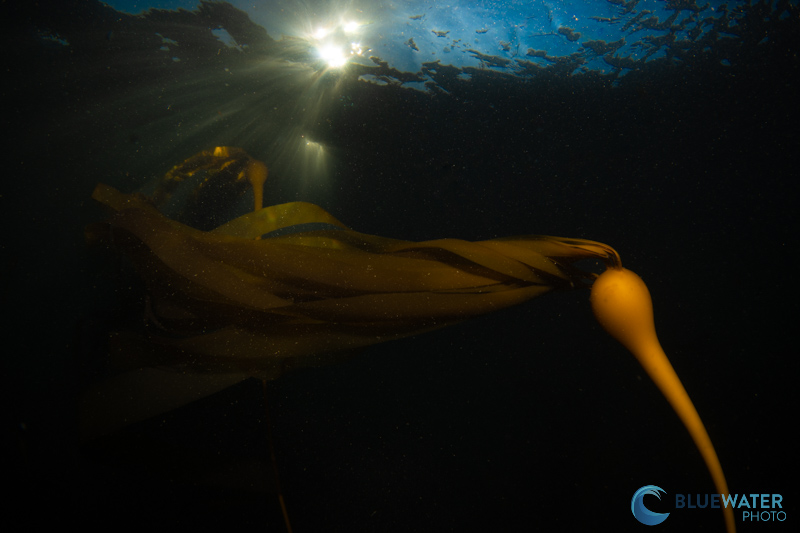
When you have a high flash sync speed, you can separate your background ambient light from your artificial strobe exposure. In this photo a bull kelp, a high shutter speed allowed me to expose the sunlight properly in just 5 feet of water during the middle of the day, while I illuminated the kelp with my Ikelite DS230 strobes. f/22, 1/400, ISO 250
TTL Considerations
TTL converters and flash triggers allow you to capture photos with accurate lighting exposure from your strobes. A TTL converter will tell your strobes what power to fire at, making them "automatic" and eliminating your need to adjust them manually. During our review, we used an Ikelite Sony TTL converter with Ikelite DS 230 strobes which was very accurate (as you can see in our photos).
While testing higher shutter speeds, we found an interesting limitation presented by the camera. When you attach a TTL converter or flash trigger to the a9 III, it will automatically think that a TTL flash is attached to it. This is even the case if you set the converter to "manual" mode. When a TTL flash is attached to the a9 III, it limits the max shutter speed to 1/500 of a second instead of 1/80,000 of a second. So if you want to take full advantage of the max flash sync speed, it's important to make sure you are using a manual flash trigger or manual sync connection.
No Rolling Shutter
With an instantaneous, global shutter, the phenomenon of rolling shutter is eliminated in the A9 III. Roller shutter is the process where an image warps because the sensor is read out top to bottom when taking a photo. Action photos will no longer have warpy artifacts when shooting with the electronic shutter. For action photographers, particularly ambient light action photographers, that want to take advantage of the insanely fast 120 fps burst shooting speeds of the A9 III, this camera is a dream. It is easy to shoot quick pelagic subjects and any speed and not worry about rolling shutter with fast subjects.
Rolling shutter also helps make movement in video less warpy and "jello-y" when panning. Underwater video shooters should be happy with this development as well.
Finally, a lack of rolling shutter has also eliminated issues with banding while taking photos under incandescent light. While this is not a benefit for underwater shooters, it is an excellent feature.
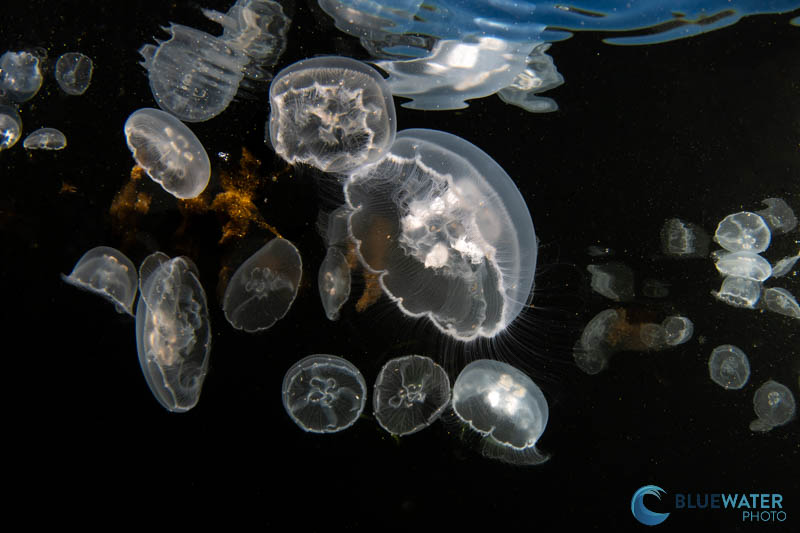
This photo of jellyfish in the middle of the day is another great example of how a high shutter speed can allow you to capture unique lighting compositions. This photo was captured with the Sony a9 III in an Ikelite a9 III housing, a Canon 8-15mm lens, a metabones adapter, and dual Sony DS230 strobes. f/22, 1/400, ISO 250
120: The Magic Autofocus and Burst Number
With a 24.6 stacked CMOS full-frame sensor, the A9 III is designed for speed beyond the global shutter. Because the sensor is stacked, reducing processing times, the camera is capable of 120 autofocus calculations per second as well as 120 frames per second burst shooting (14-bit RAW files). This makes the A9 III the fastest focusing and fastest burst shooting full-frame camera in the world. Although most underwater strobes would not be able to keep up with these speeds, the A9 III does open up a new dimension of autofocus tracking and burst shooting capability. Action photographers will not be able to find a better camera on the market, likely for years to come.
In our underwater shooting, we found the autofocus from the Sony a9 III to be on par with our experience with the Sony a7R V. Both cameras feature the world's top autofocus system powered by a dedicated AI autofocus processor. We selected the autofocus continuous mode with autofocus tracking for most of our shooting. It worked spectacularly for blackwater diving - even with the Sony 90mm macro lens. That said, I would have liked to see the camera pick up fish eyes for tracking. It is still not quite on par with competitors like the Canon R7.
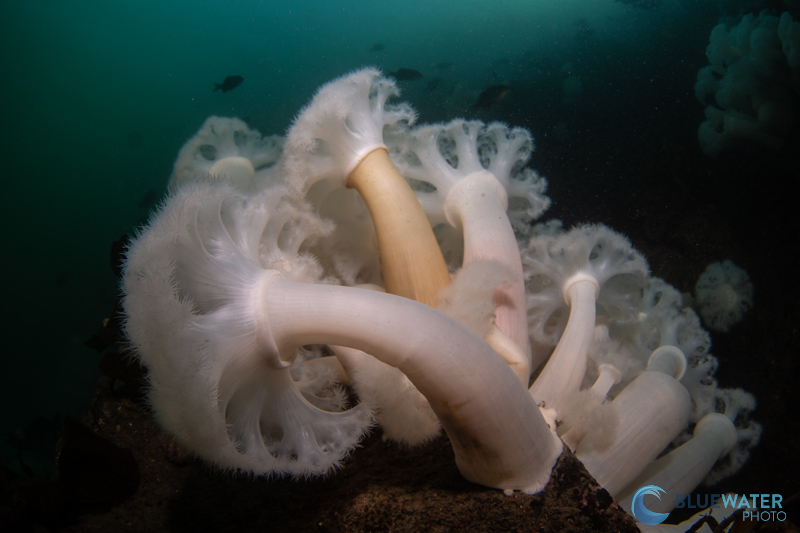
Metridium anemones captured with the Sony a9 III, Canon 8-15mm fisheye and metabones adapter, Ikelite a9 III housing, and dual Ikelite DS230 strobes. f/13, 1/80, ISO 250
Concerns About Dynamic Range
As with any new technology, there are certain drawbacks associated with the Sony A9 III. The stacked sensor design reduces dynamic range by 1.5 stops. This is indicated by a native ISO of 250 rather than 100. While diving, we made sure to extensively test how the stacked sensor design of the a9 III affects details from the highlights to the shadows of an image. The best way to do this was to spend time in shallow water on a bright sunny day and shoot into the sun. Overall, in the image below you can see that while there is some loss of detail in the highlights, there is plenty, sufficient details in the shadows and a nice gradient from the whites to blacks. Though I can see a slight difference in dynamic range to similar sunball photos we captured with the Sony a7 IV and a7r V, there is not enough of a difference to discount the benefits of an high flash sync speed of 1/80,000 of a second. That said, if you are using a TTL converter, you may want to consider another camera as the benefits of shooting at 1/500 of a second are made even by the native ISO of 250.
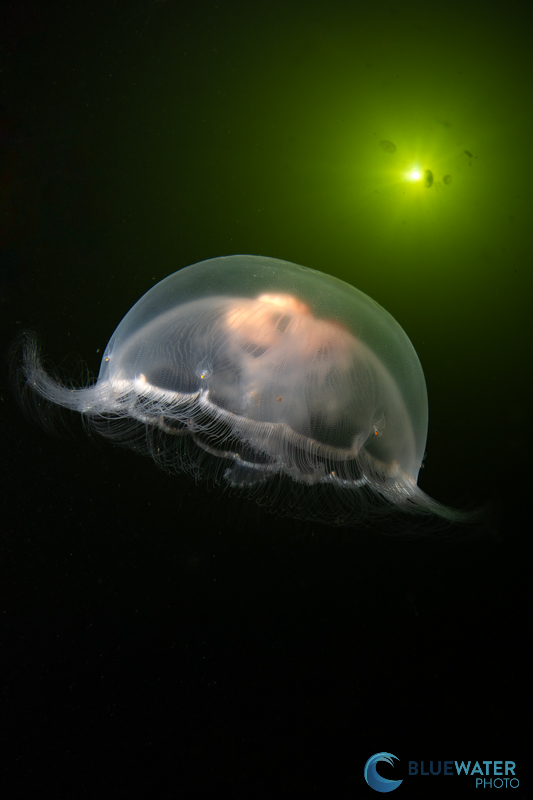
In this dynamic range test, I was testing the Sony a9 III at its native ISO of ISO-250. You can see that the highlights are a bit blown out at the center of the sun but the gradation of color to the shadows is quite even and nice. If I lowered the exposure, the highlights would be exposed properly, but more of the background would be darker and black. Overall, the loss in dynamic range is not a huge issue, but it is a little noticeable. 1/500, f/22, ISO 250
4K/120p Recording
While the dynamic range limitations might not be great for video shooting, the A9 III is still a very capable video camera with the major highlight being the lack of rolling shutter. The camera is capable of capturing 4K/120p video with the full width of the sensor and 4K/60p oversampled from 6K for more detail. In our underwater footage, you can see how these high frame rates made it easy to slow down footage of jellyfish and macro subjects for further stabilization. All of our footage was shot in S-LOG3 and color graded for additional dynamic range and details in our video.
While the Sony a9 III might not be designed for video shooters, it does inherit excellent video features from other Sony full frame bodies. The camera is still a fantastic option for hybrid photo & video shooters.
Sony A9 III Underwater Housings
Currently, there are two underwater housing options available for the Sony a9 III - an Ikelite polycarbonate a9 III housing and a Nauticam anodized aluminum a9 III housing. With such an exciting camera, we also expect housings from most manufacturers including Aquatica and Marelux. Unfortunately, we can confirm that the Sea & Sea Sony universal housing will not be compatible with the Sony a9 III.
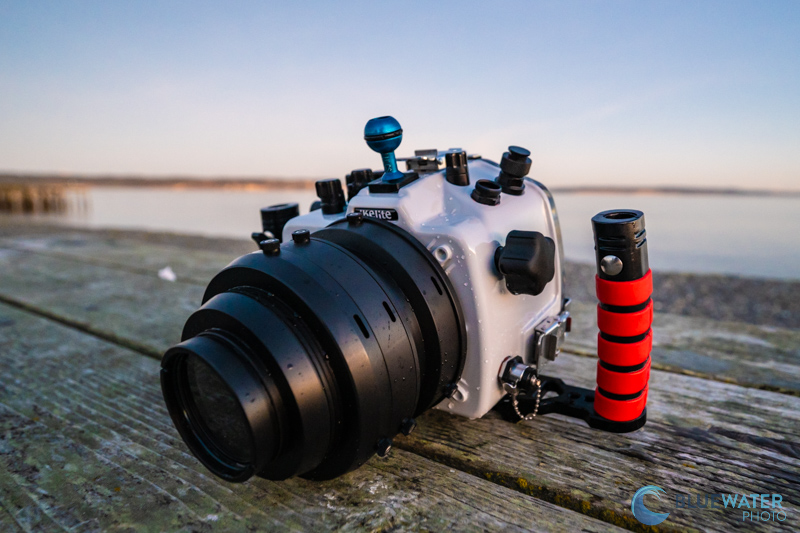
The Ikelite Sony a9 III housing in the field, set up for macro.
The Ikelite Sony a9 III Underwater Housing
For this review, we used Ikelite's new Sony a9 III underwater housing. Along with compatibility with Ikelite's new charging and data transfer cable, this housing has been updated with new dials. These dials are firmer and easier to grip than the predecessors which will be a welcome change for cold water divers. The Ikelite housing offers compatibility with every control and function on the camera except for the joystick (which is not necessary underwater). It is depth rated to 200 feet and compatible with Ikelite's dry lock port system that can be used with the majority of lenses and underwater shooter would consider using with the a9 III. We paired the Sony a9 III with Ikelite Sony TTL converter and dual DS 230 strobes for a lighting system that adjusts automatically in quickly changing underwater lighting conditions.
The Nauticam Sony a9 III Underwater Housing
The Nauticam a9 III housing is an anodized aluminum housing. It is compatible with Nauticam's notable optics like the Nauticam FCP-1, Nauticam WACP-C, and the Nauticam WWL-1B. Nauticam's claim to fame is their easy port locking mechanism.
Top Sony A9 III Underwater Lenses
Best Wide-Angle Lenses
The Canon 8-15mm fisheye lens with the Sigma MC-11 adapter is the fisheye option for most wide angle shooters with the Sony a9 III. I found the autofocus to be effective, though not as fast as a Sony native lens. The metabones adapter can be used with the Canon 8-15mm fisheye lens as well. However, the autofocus is slower. The one benefit of the metabones over the Sigma MC-11 is that it can autofocus in video mode - albeit, I found the autofocus to be almost unusable when shooting video. There is an exciting new Sigma 15mm E mount fisheye lens that is native to the Sony E mount, but we are currently waiting for port chart updates and our first underwater review of the lens.
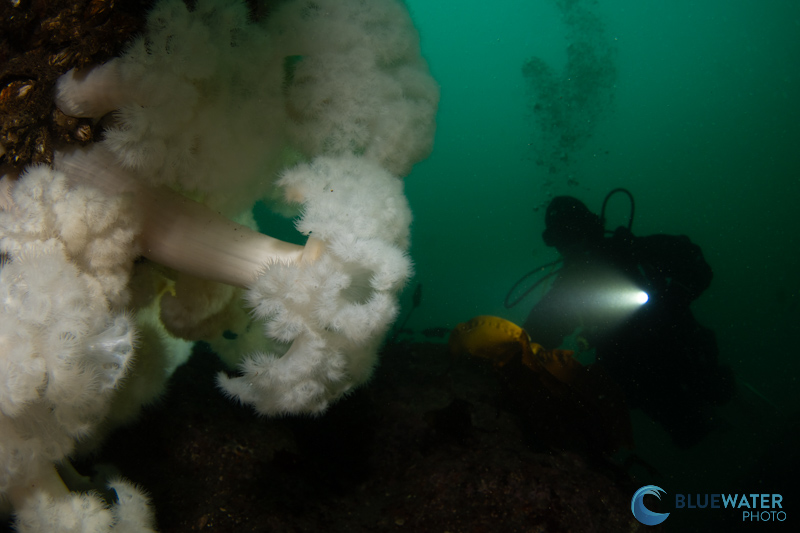
Sony a9 III photo taken with the Canon 8-15mm fisheye lens with the Sigma MC-11 adapter
For both photo and video, the Sony 16-35mm F4 lens with an 8-inch dome or larger is an excellent choice. There are also some great wet wide-angle lenses available such as the Nauticam wet wide-angle lens or the Kraken KRL-01 wet wide-angle lens that can be used with the Sony 28mm prime lens. The Sony 28mm prime lens also works well with a fisheye conversion lens to capture even wider shots of large reefscapes.
If you're looking for the most versatile wide-angle Sony set up for underwater shooting, the Sony FE 28-60mm F4-F5.6 lens behind a flat port with zoom capability paired with the Nauticam WWL-1B Wide-Angle Wet lens is the way to go. The downside is that it's currently only compatible with Nauticam and Marelux housings. Check out the Underwater Photography Guide's article about the Sony FE 28-60mm F4-F5.6 lens for more information or email us at sales@bluewaterphotostore.com to get set up with this combination.
Best Mid-Range Lenses
The Sony 28-70mm F3.5-F5.6, the Sony 24-70mm F4 and the Sony 35mm F2.8 portrait lens are three good mid-range options.
Best Macro Lenses
There are two native Sony lenses that we think are good macro options for the a9 III: the Sony 90mm and 50mm macro. The 90mm has a faster autofocus motor, and the 50mm macro is quite slow to autofocus. Unless you need to photograph subjects larger than a golf ball, we typically recommend the Sony 90mm macro over the Sony 50mm macro. Recently, we reviewed the Sigma 105mm f/2.8 DN DG Art macro lens. It's an excellent and more affordable option to the Sony 90mm with better image quality. However, it is not a great choice for video due to focus breathing. We already mentioned the Sony FE 28-60mm F4-F5.6 lens and how it makes a great wide-angle option when used with a wide-angle wet lens, but combine it with the Nauticam Compact Macro Converter CMC-2, and it becomes a very versatile and highly capable macro set up too.
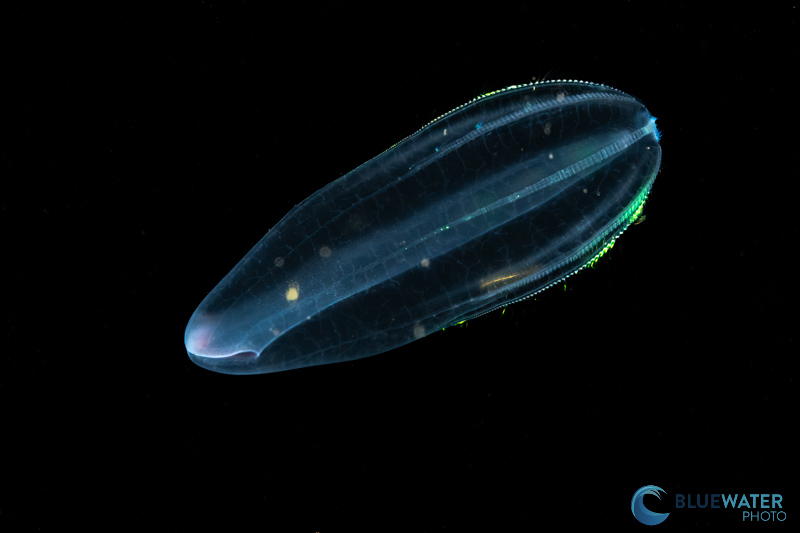
Sony A9 III photo captured with the Sony 90mm macro lens
Canon Lenses for the Sony A9 III
Canon lenses can be attached to the Sony a9 III with the Metabones, Sigma MC-11, or Photodiox adapters, but auto-focus is generally better with Sony lenses. Lenses like the Canon 8-15mm, 16-35mm, 17-40mm, and 100mm can work well.
Conclusions
Although the Sony A9 III is not a camera for the general consumer - after all, it clocks in at $5999.99 - it is a marvel of engineering. The jump Sony has made to the global shutter will likely be as impactful to underwater photography as the jump from DSLR to mirrorless cameras. The newfound capability of a shutter and sync speed maxing out at 1/80000 as well as recent improvements in strobe technology results in incredible control of ambient and artificial light. Incredibly shallow sunball photos and beautiful black backgrounds are easily attainable. The only potential limitations could be the duration of the flash coming from the strobe itself - an aspect of strobe engineering that had not been a limiting factor in the past.
The global shutter has also opened the door to incredibly fast autofocus refresh rates as well as incredibly fast burst shooting. At 120 fps, it will be almost impossible to miss action. With no rolling shutter, the A9 III is the ultimate action camera for baitball and pelagic shooting.
And though we may see limitations in dynamic range at first, this is Sony's opening bid at global shutter. In years to come this technology will be sure to trickle down to consumer-grade cameras with improvements to dynamic range. One thing is certain, it's an exciting time to be an underwater photographer.
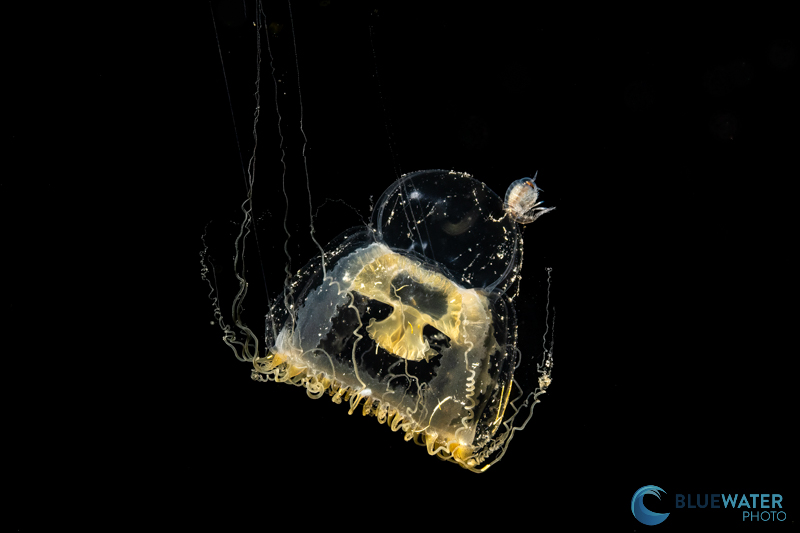
The Sony a9 III is a two part benefit for macro underwater photographers. A higher shutter speed allows you to easily produce black backgrounds by eliminating ambient light, but it also helps freeze the frame for fast moving critters. 1/500, ISO 500, f/22

